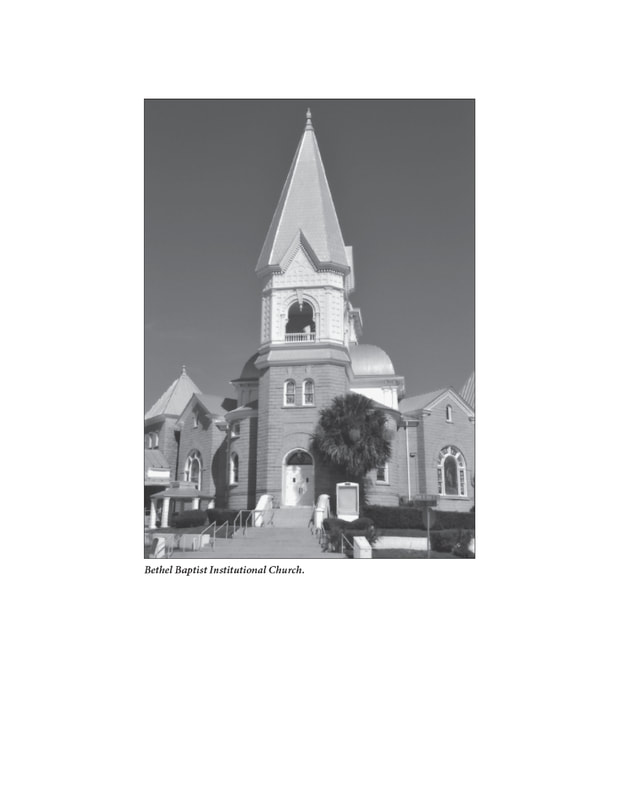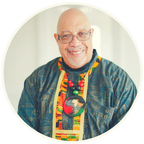|
Short Excerpt from my book, Unless WE Tell It...It Never Gets Told! and the 14th Chapter on Bethel Baptist Institutional Church, and one of its pastors, Rev. John Milton Waldron. “Reverend John Milton Waldron became Bethel’s pastor in 1892, after Rev. Matthew William Gilbert left to be the President of Florida Baptist Academy (now Florida Memorial University). Born in 1863, Rev. Waldron had been educated at Lincoln University in Pennsylvania and Newton Theological Institution in Massachusetts. In 1894 Waldron incorporated Bethel as the first Black Institutional Church in the South and enabled Bethel to provide social services and education to the surrounding communities as Protestant churches were providing in the North. In 1895, Reverend Waldron led the congregation in constructing the first Institutional Church building to be erected in the South by a “colored” congregation. The new structure was built of red pressed brick and trimmed with Georgia marble. It contained a main auditorium with a seating capacity of 1,150 and nine classrooms. At the time of its construction it was the most convenient and attractive church building in the city, and at a cost of $26,000 (more than $800,000 today). Ironically, this beautiful edifice was in use only a short time before it was destroyed by the devastating Jacksonville fire on May 3, 1901. Reverend Waldron joined Abraham Lincoln Lewis and others in founding the Afro-American Life Insurance Company (“the Afro”) to provide burial benefits for the “colored” community. The Afro also opened a savings department through which individuals could deposit ten, fifteen, twenty-five cents per week. The congregation of Bethel Baptist Institutional Church in the meantime had grown beyond the five hundred mark, and, in order to provide for its continued growth, it was deemed necessary to find a larger site and one that was off of the main business streets. In 1903, the “Rivers’ Square” was purchased, bounded by Hogan Street (now McKissick Street), Eagle Street (now First Street), Julia Street, and Caroline Street (now Bethel Baptist Street), and facing the new City Park—one of the most desirable blocks in the city for church purposes. Led again by Reverend Waldron, Bethel’s congregation proceeded to erect one of the most modern and spacious church buildings in the South. It was designed by architect M. H. Hubbard of Utica, New York, and combined elements of Greek Revival and Romanesque Revival architecture. Bethel’s members took pride in the fact that “the church was erected by Colored workers, under the direction of Colored contractors. (The Bethel Baptist Institutional Church Historic Sanctuary still stands.) Reverend Waldron said it best when he stated that “Bethel should stand as a refutation of racial inferiority and an object lesson of the better side of Negro culture and progress in the South.” Reverend Waldron left Bethel and Jacksonville in 1907 to pastor Shiloh Baptist Church in Washington, D.C., but not before establishing his leadership in the civil rights arena. When the Supreme Court upheld the “separate but equal” doctrine in 1896, Blacks in twenty five cities across the South held boycotts in the ensuing decade to protest segregated transportation. In 1901 Reverend Waldron led Bethel in a successful boycott of the transportation system of Jacksonville in response to the city’s segregation ordinances. Historians August Meier and Elliott Rudwick described Bethel as having been a “key church in the boycott.” From 1905 through 1910 Reverend Waldron would become one of the nation’s most vocal civil rights leaders. His crusade against racial injustice motivated him to join with W. E. B. Du Bois and other Black leaders in the Niagara Movement, a forerunner of the National Association of the Advancement of Colored People. He would later become the national treasurer of the Niagara Movement. An article written by William English Walling in 1908 entitled “Race War in the North” in The Independent described a massive race riot directed at black residents in the hometown of Abraham Lincoln, Springfield, Illinois, that led to seven deaths, forty homes and twenty-four businesses destroyed, and 107 indictments against rioters. Walling ended the article by calling for a powerful body of citizens to come to the aid of Blacks. Rev. Waldron and many others responded to the call, and that eventually led to the formation of the National Negro Committee, which held its first meeting in New York on May 31 and June 1, 1909. In May 1910, attendants at the second conference of the National Negro Committee established the permanent body known as the National Association for the Advancement of Colored People (NAACP). Reverend John Milton Waldron and the others who founded the National Negro Committee were also the founders of the NAACP.” (In the 1906 Harper's Ferry Niagara Movement picture, Rev. Waldron is standing in the upper right. Dr. Du Bois is seated in the front row. On the National Negro Committee stationery, in the "header" third column, you will see the name of Rev. J. Milton Waldron, just above the name of Prof. W.E.B. DuBois.) Part of the Rich History of Black Jacksonville and the Historic Legacy of Bethel Baptist Institutional Church--The Bethel Church--When You Know Better, You Just Know Better.
0 Comments
Leave a Reply. |
AuthorRodney. L. Hurst, Sr. Archives
June 2024
Categories |
RODNEY L. HURST, SR. - THE STRUGGLE CONTINUES!




 RSS Feed
RSS Feed
